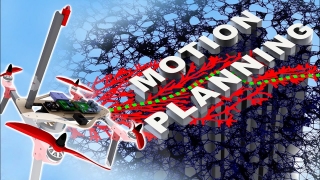
This fully autonomous drone has an onboard computer ‘brain’, camera ‘eyes’, and an algorithm that generates the fastest path around unknown obstacles as they’re detected mid-flight. Let’s see ArduPilot do that.
GPS-denied, vision-based autonomy is a very popular topic in robotics right now. Most importantly: once you know where you are, how do you most efficiently navigate around the environment without bumping into things? Variations of Dijkstra’s algorithm such as A* or D* Lite can be used to quickly and efficiently calculate the optimal path over ‘nodes’, or potential waypoints. This is the same general algorithm used in google maps to find the fastest route through traffic. Putting all of this together on a flying drone took a bit of specialized hardware, some help from Robot Operating System (ROS), and a whole lot of testing. Yes, there are pre-existing packages for pretty much every feature I implemented, but where's the fun in using someone else's code? If you learned something, I’d greatly appreciate a like on this video and maybe even a subscription to my channel for more projects like this in the future.
